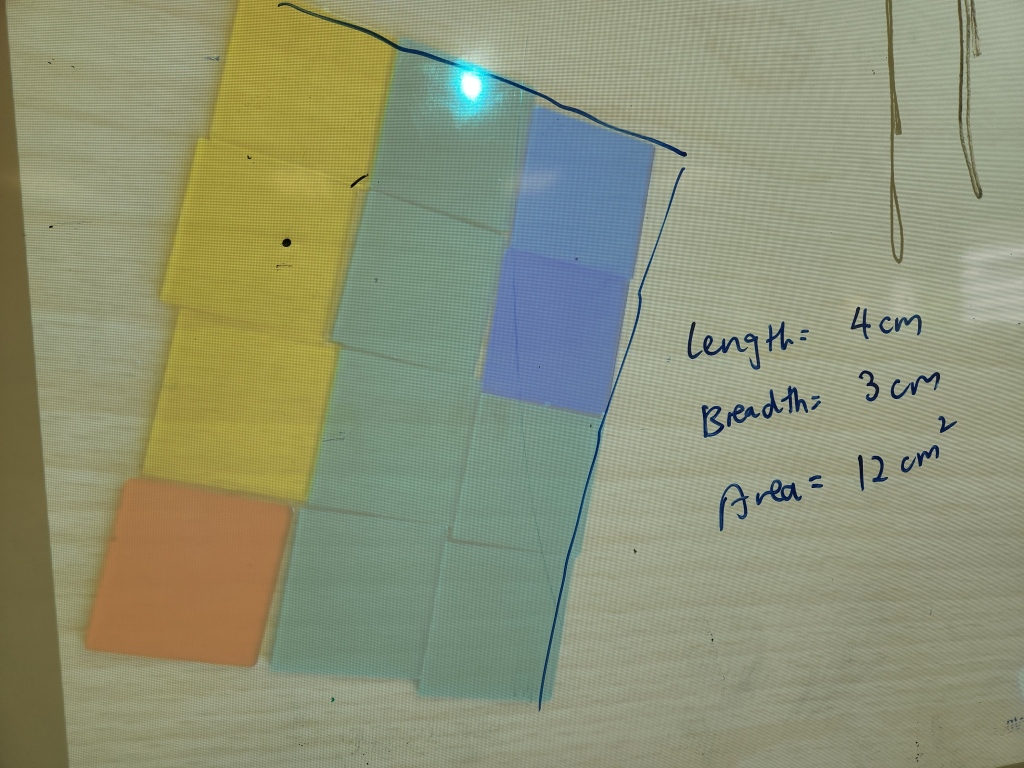This is the second time I am teaching Area and Perimeter. I decided to apply the concept of Multiple Intelligences to the lessons.
After teaching students that Area means the amount of space inside a figure, artistic students could create designs of given areas.





Kinesthetic students were given square tiles to form different shapes and to find their respective areas and perimeters.

At one point, I told students to use six square tiles to form different shapes. I drew the shapes that they formed on the board. We discovered that the shapes might look different, but their areas were the same. Their perimeters could be the same or different.

Students were who enjoyed logical reasoning were encouraged to calculate perimeters in different ways. For example, the perimeter of a 4 cm by 3 cm rectangle could be calculated by:
1) 4 + 3 + 4 + 3 = 14
2) 4 x 2 + 3 x 2 = 14
3) (4 + 3) x 2 = 14
Finally, the musical students sang the following song to the tune of Twinkle, Twinkle Little Stars:
Area equals length x breadth,
Or you can count the squares
Perimeter, length around the figure
You can add up all the sides
Don’t forget the unit for area
You have to add the 2.